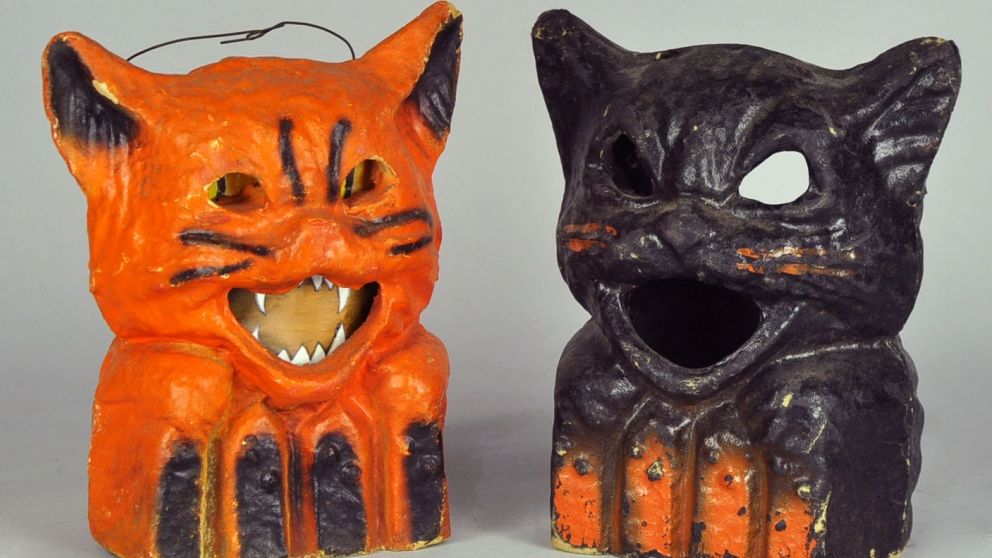Halloween Collectibles: Ghosts, Ghouls, & Pumpkins Oh My!

Halloween has a long and ever-changing history beginning in Ireland as a pagan holiday celebrating the shift of seasons and the end of harvest. The priests, or Druids, were the leaders of the Celts. During this holiday Druids, would perform rituals and light bonfires. By dressing as ghosts and performing divination spells the Celts hoped to connect with spirits. When the Romans moved to conquer the north they obligated the Celts to modify their celebration to be a day of Christian festivity changing the name to All Saints Day, eventually becoming All Hallows Day and then Hallowe’en. The holiday was celebrated in Europe and first came to America only in the late nineteenth century. Many of the traditions we have today come from past traditions or stories, such as the jack-o’-lantern.
Though Halloween came to America in the nineteenth century, with the large masses of Irish immigrants who fled overseas to escape the potato famine, it wasn’t until the twentieth century, that it became a widely observed and celebrated holiday. What began as a holiday of “guising,” where children imitated beggars in Europe, became a commercialized, festive season full of decorations, costumes, and candy. Trick-or-treating first picked up in America in the 1920s but, more so, only “tricking.” Vandalism was an issue for urban areas during the Halloween season. Anoka, Minnesota, the Halloween Capital of the World, held the first endorsed Halloween celebration in America in 1920. The effort was made in hope that offering children treats and a distraction would stop them from pulling pranks on the town. The concept stretched nationwide to curtail damages but was abruptly stopped when War World II began and the country’s sugar was rationed. The wholesome family event of trick-or-treating we know today began with the baby boomer generation after the war.
With the start of Halloween as a recognized holiday, a market for memorabilia and decorations began. People would decorate their homes and children would have costumes; creating an assortment of objects to begin collecting. While we mostly see modern examples of this today, the market for vintage Halloween memorabilia is strong and it works to preserve historical pieces. The practice really took off in the 1990’s, when two books coining the practice of vintage Halloween collecting were published: Halloween in America written by Stuart Schneider and Halloween Collectables written by Dan and Pauline Campanelli. Whereas other holidays, like Easter or Christmas, have decorations that are saved over the years as family treasures, most Halloween decorations, such as jack-o’-lanterns, party supplies, or even costumes are thrown out after the holiday season. The fact that this made vintage Halloween memorabilia so scarce, contributes to its popularity as a collector’s item and Halloween collecting continues today.









